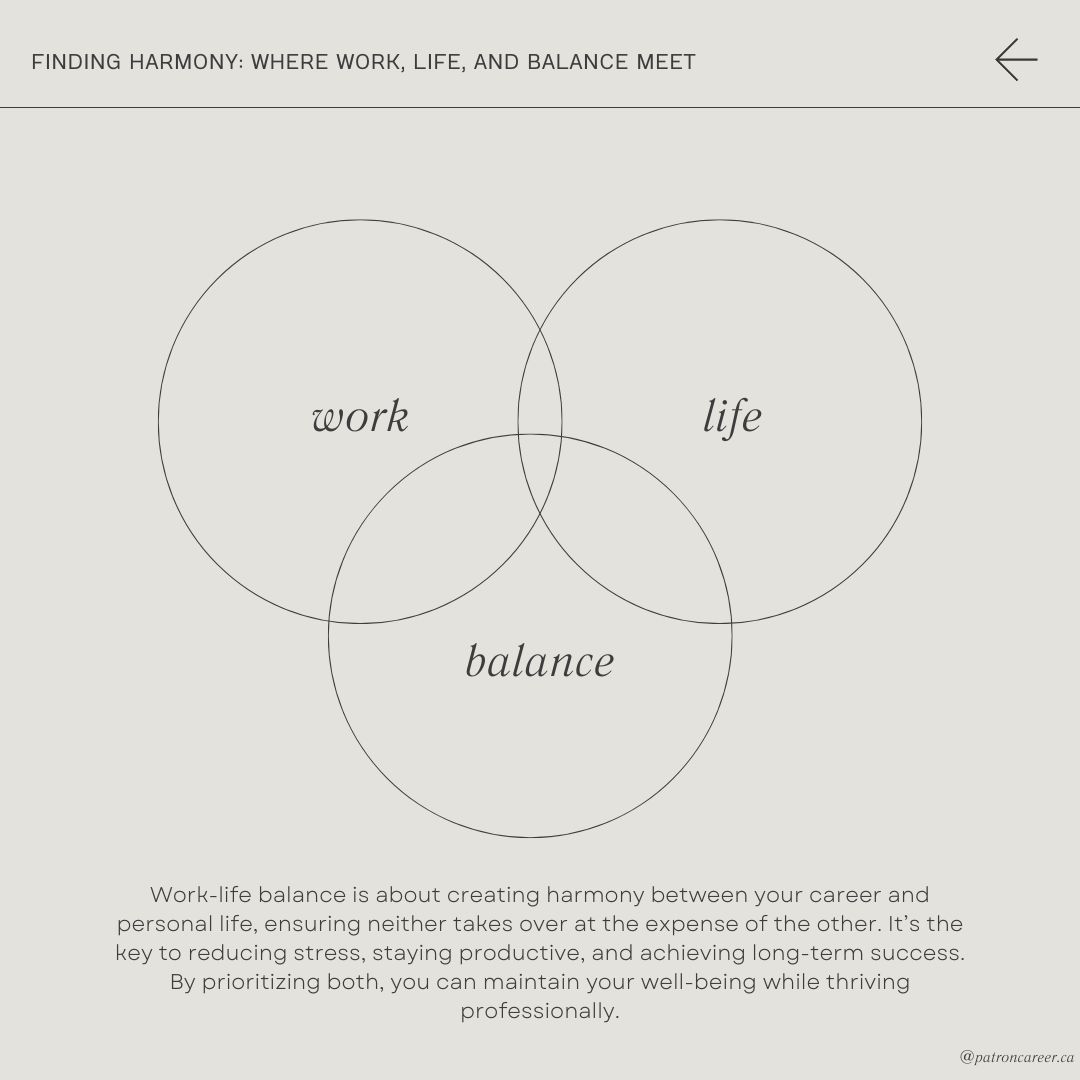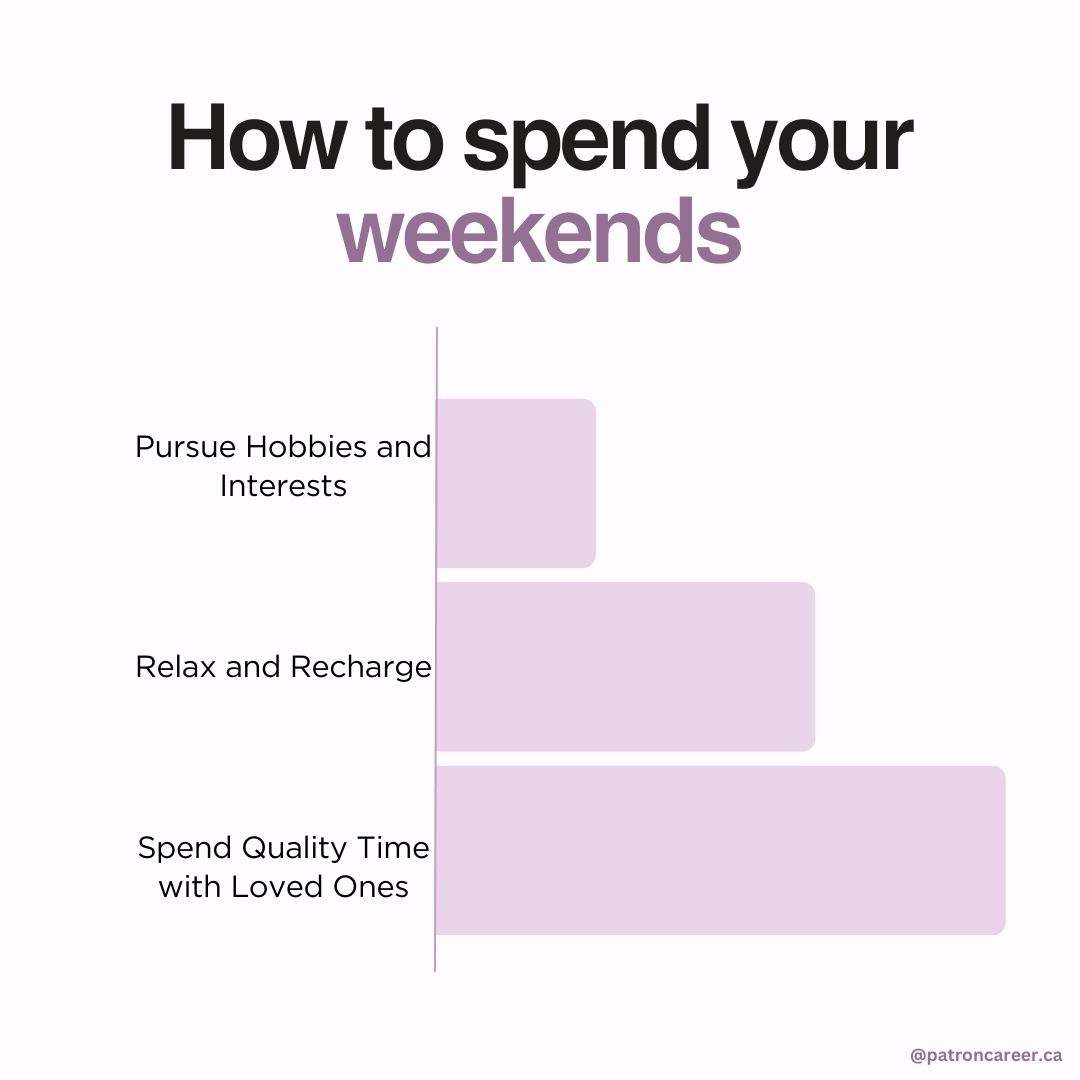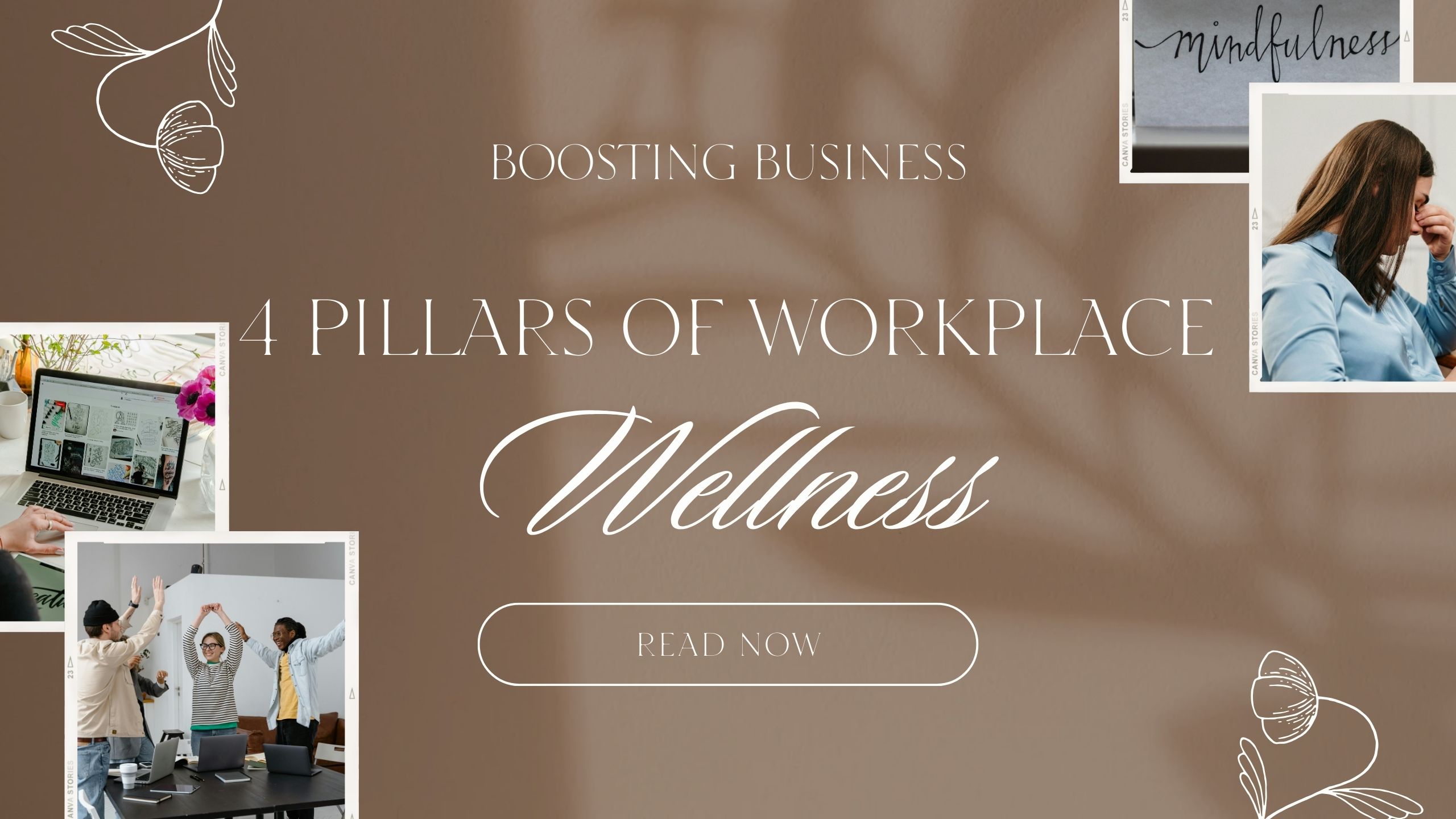Work-Life Balance: What It Is and How to Achieve It
One of the most crucial aspects of an employee’s career journey is persistently maintaining a balance between work and personal life to ensure one’s overall well- being. Ranking 5 th in the 2024 Global Work-Life Index, Canada has set a high standard, accentuating the need to keep employees and employers mindful of this balance, so that our nation continues to prosper on all fronts.
In the fast-paced world of work today, people are constantly torn between demanding careers and fulfilling personal responsibilities, often feeling overwhelmed by the need to succeed in both arenas. This blog explores what work-life balance truly is and offers actionable steps to achieve it for prolonged success.
What Is Work-Life Balance?
When a person is in the driver’s seat, capable of steering his personal and professional lives in a manner that ensures neither one overshadows the other, he is said to be in full control of how he spends his time and energy. This is the essence of work-life balance, indeed. It is all about maintaining a healthy equilibrium of work and personal responsibilities so that neither career nor personal life dominates.
Throughout the employee lifecycle, employees should learn the art of achieving this balance so that their work or personal life—hobbies, relationships, well-being and self-care don’t suffer.
Achieving this balance is vital because ignoring either side can lead to burnout, reduced productivity, and dissatisfaction with both professional and personal aspects of life.
Related: What Is Workplace Wellness?
Why Is Work-Life Balance Important for Prolonged Success?
Work-life balance matters. It’s a key driver of long-term success and well-being, and when individuals strike a healthy balance between work and personal life, the benefits are innumerable. Some of these are shared below:
- Better Productivity: An employee who is not feeling overwhelmed with work and deadlines tends to concentrate better, think creatively and perform tasks with full efficiency. It also leads to increased engagement.
- Mental and Physical Health Tweaks: Multitasking and overworking have ruined several people to their core by inflicting them with chronic stress and other health issues such as anxiety, depression and hypertension.
- Strengthened Relationships: A balanced life allows you to spend quality time with people in your life other than work, and this helps you build better relationships.
Moreover, a balanced life also strengthens your social support system while making life joyous and your job-- satisfactory.
How to Achieve a Sustainable Work-Life Balance?
Even though the balance varies for each individual, achieving it requires conscious effort. But it is possible, should you imbibe the mindset to put your mental health first and create a harmonious blend between work and life:
1. Set Clear Boundaries Between Work and Personal Time
The balance comes from within, when you inculcate the practice of setting healthy boundaries and saying no to matters that hamper your inner peace, quite often. This means defining where work ends and personal time begins. Some of the best strategies include:
Designate Specific Work Hours: Whether you work in an office or remotely, stick to a defined work schedule. When your workday ends, resist the urge to check emails or engage in work-related tasks.
Create Physical and Mental Space for Work: If working from home (WFH), designate a specific area where you do your job. Mentally disconnect from work once you leave that space.
Tip: Communicate your boundaries with your team and family members to ensure respect for your personal time.
2. Prioritize Tasks and Practice Time Management
From chaos to clockwork, managing time effectively helps you to maintain a work-life balance with much ease. It's important to stay on top of your priorities and identify MITs (Most Important Tasks) as per their urgency to unlock deep focus at work. You can reach the pinnacle of productivity by following these techniques:
Use the Eisenhower Matrix: Categorize tasks based on urgency and importance to make better decisions on what to tackle first.
Apply Time-Blocking: Allocate specific time slots for each task, ensuring that both work and personal activities are scheduled throughout your day.
Pro Tip: Review your to-do list at the end of each day and adjust your priorities as needed.
3. Learn To Say No
Often our inability to say “no” to bosses or colleagues results in taking on more work than we can handle. Almost every one of us faces this dilemma at work whether it's additional projects or social engagements. Learning to decline with thanks, when your plate is full saves you from fatigue and stress that come along when we fail to set healthy boundaries.
Be Mindful: Before you intend to say “yes” to any new commitment, assess and introspect whether it aligns with your goals and values. Every no is a yes to something that truly matters to you.
Practice Assertiveness: Be polite while explaining your reasons for declining, and don’t pester yourself by feeling remorseful for prioritizing your well-being. Keep in mind always that saying no doesn’t mean you’re less dedicated; it means you value quality over quantity.
Also Read: The All-Encompassing Guide on Workplace Burnout.
4. Incorporate Regular Self-Care
Self-care is often neglected but it is a crucial component to balancing work and personal life with grandiose. Give yourself enough time to recharge, refocus and perform activities like meditation, or brisk walks that replenish your mental, physical or emotional energy. Here is what you can do to prioritize self-care:
Exercise Regularly: Physical activity reduces stress and boosts your mood, helping you stay energized and focused. Practise meditation and deep breathing exercises regularly.
Sleep Hygiene: Ensure you get enough rest each night by maintaining a regular sleep schedule and avoiding screens before bed. Also, take regular breaks at work too.
5. Foster Supportive Relationships at Work and Home
Social engagement amps up your inner energy to balance work and life on equitable terms. Building a support system, both in and out of the office, plays a crucial role in maintaining work-life balance. Supportive relationships reduce stress and can also provide insight and help when you're feeling overwhelmed.
Delegate Tasks: Don’t hesitate to delegate responsibilities to team members when you feel overwhelmed. Take help, whenever needed.
Nurture Personal Relationships: Spending time with loved ones not only provides relaxation but also serves as a reminder of the bigger picture beyond work.
How to Overcome Common Challenges in Achieving Work-Life Balance.
When you’re aiming to balance work and personal life, several challenges surface making it even more difficult than it already is. Here is how you can tackle them:
- Work Overload: As soon as work piles up, it's easy to let personal time slip. One of the most efficient ways to combat this is to break down tasks into smaller and manageable chunks.
- Guilt: You end up feeling guilty for prioritizing personal time over work, especially in high-pressure work environments. To combat this, you need to reframe your mindset to see personal time as an investment in your future self and long-term success.
- Technological Intrusion: With emails and work apps always within reach, it's easy to work outside designated hours. Consider adopting a digital detox during non-working hours to fully disconnect and rejuvenate.
Conclusion
Work-life balance is not something you achieve in a day or within the span of a few months. It’s a dynamic process that requires continual adjustment. To make it work, your ulterior motive should not be to divide time equally between work and personal life, but rather to create a harmony that allows you to excel in both. Follow the techniques above, and see a drastic change in your overall well-being.
Remember: Work-life balance is the prime factor to sustained productivity, well-being and happiness.






